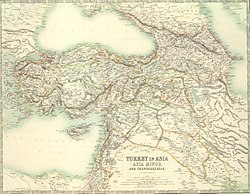Prior to 4th century
| History of Turkey |
|---|
 |
| Timeline |
- 1000 BCE - Thracian tribes founded the settlements of Lygos and Semistra.
- 657 BCE – Byzantium founded by Greeks.
- 513 BCE – City taken by Persians under the rule of Darius the Great. [1]
- 479 BCE – Spartans take control of Byzantium from the Persians following their victory at the Battle of Plataea. [1]
- 411 BCE – Captured by Sparta.
- 408 BCE – Captured by Athens.
- 340 BCE – Besieged unsuccessfully by the forces of Philip II of Macedon.
- 317 BCE – Battle of Byzantium.
- 193 CE
- Besieged by Septimius Severus.
- Population: 15,000
- 196 – Captured by Septimius Severus. [2] Walls demolished and city razed.
- 203
- Septimius Severus rebuilds the city.
- Hippodrome built (approximate date).
- Mese main street built.
- Baths of Zeuxippus built (approximate date).
- Walls rebuilt (approximate date).
- 267 – Captured by the Herules.